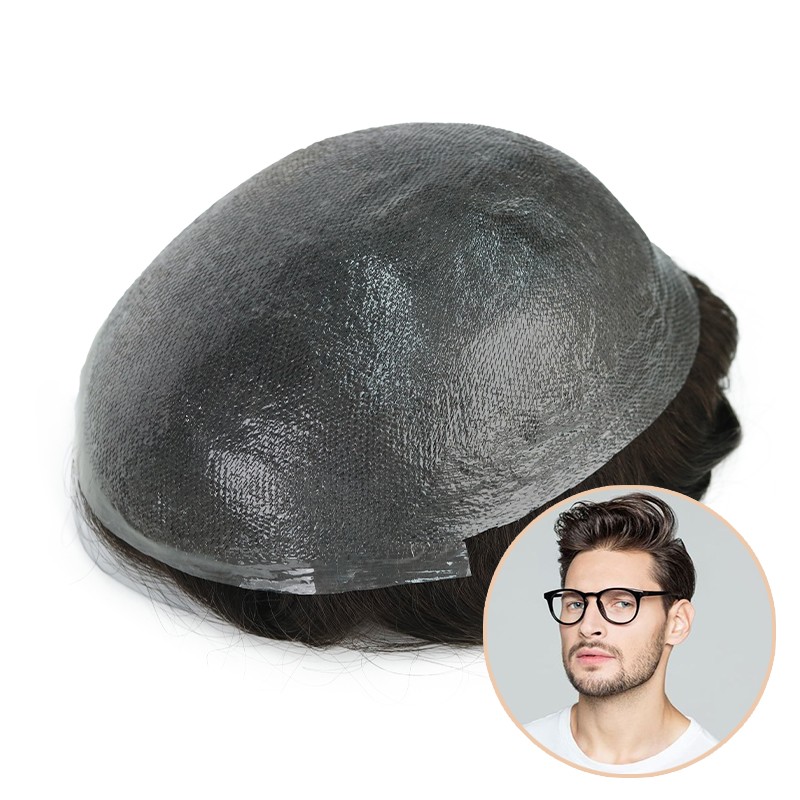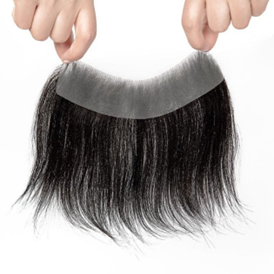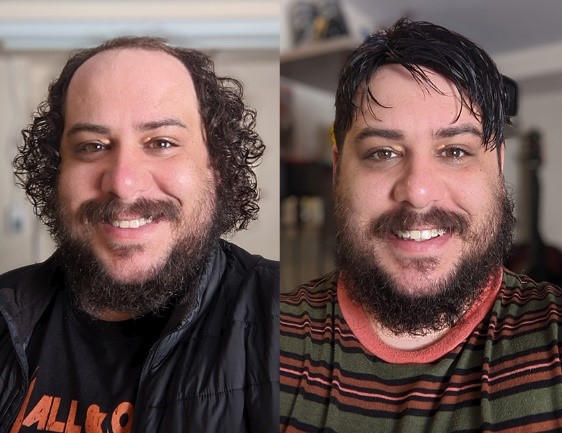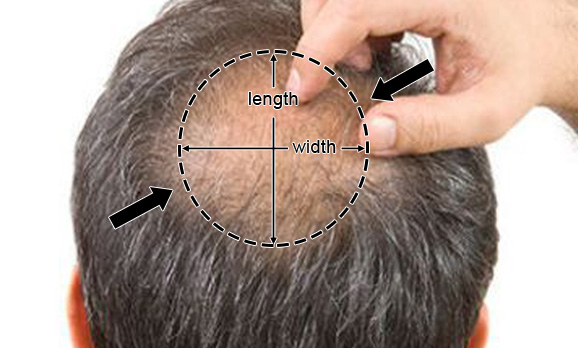Toupees for men have come a long way in terms of quality, appearance, and natural-looking results. Despite this progress, there are still misconceptions surrounding toupees that prevent men from exploring this viable solution for hair loss. In this comprehensive guide, we will debunk common misconceptions about toupees for men and provide valuable tips and tricks to achieve a natural-looking result. From selecting the right toupee to proper maintenance techniques, we’ll cover everything you need to know to enhance your appearance and regain your confidence with a natural-looking toupee.
Natural-Looking Toupees for Men: Tips and Tricks
- Choosing the Right Toupee: Selecting the right toupee is crucial for achieving a natural look. Consider factors such as hair color, texture, density, and base material. To ensure seamless integration, choose a toupee that closely matches your natural hair. Opt for base materials like lace or monofilament that mimic the appearance of the scalp, creating a realistic result. Take your time during the selection process, and if possible, try on different toupees to see which one looks the most natural and suits your preferences.
- Seek Professional Consultation: To ensure the best outcome, seek the advice of a hair restoration specialist or hairstylist experienced in toupees for men. They can provide personalized guidance based on your unique hair type, face shape, and desired style. A professional consultation allows for a customized approach, ensuring that the toupee you choose complements your features and provides a natural-looking result. They can also recommend the most suitable base material, attachment method, and styling options.
- Pay Attention to Hairline and Hair Placement: A natural-looking hairline is crucial for achieving authenticity with your toupee. Opt for a toupee with a gradual or irregular hairline to mimic the natural hair growth pattern. Alternatively, choose a customization option that allows for personalized hairline design. Proper hair placement is also important. Make sure the hair strands are carefully placed to match the direction and density of your existing hair, creating a seamless blend between the toupee and your natural hairline.
- Style and Blend Your Toupee: To achieve a natural look, it’s important to style and blend your toupee with your existing hair. Work with a talented hairstylist who can shape, blend, and trim the toupee to perfectly resemble your natural hair. To fit your facial characteristics and preferences, they can alter the toupee’s length, layers, and texture. Through their skill, they can produce a smooth transition between your own hair and the toupee, increasing the overall appearance and guaranteeing a uniform appearance.
- Use Proper Attachment Techniques: Proper attachment techniques are essential for the natural look and feel of your toupee. You can connect a toupee securely using sticky tapes, liquid adhesives, or clips, depending on the toupee and your personal desire. To guarantee a snug fit, adhere to the manufacturer’s directions or seek out expert help. You may feel confident and at ease knowing that the toupee will stay in place and blend in with your natural hair thanks to a proper attachment.
By following these tips, you can choose the right toupee, achieve a natural look, and confidently embrace your new hairstyle. Remember, seeking professional guidance and investing time in the selection process will greatly contribute to the natural and authentic appearance of your toupee.
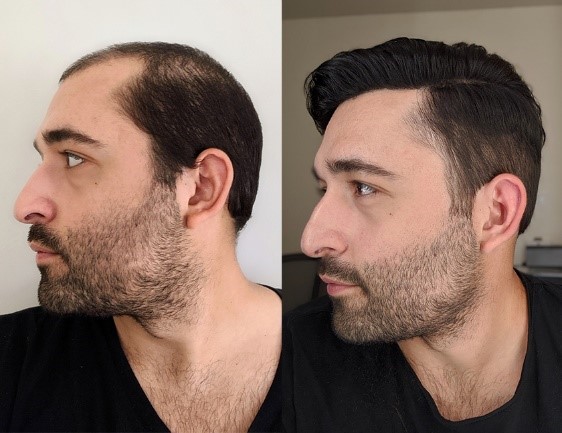
Common Misconceptions About Toupees for Men Debunked
- Toupees Look Unnatural: The idea that toupees look artificial or unnatural is among the most widespread misconceptions about them. It’s crucial to debunk this fallacy, though. Modern men’s toupees are created with advances in technology and artistry to mimic the look and feel of real hair. Toupees of the highest caliber are created with accuracy and attention to detail, guaranteeing a smooth match with your natural hair and scalp. The toupee’s base material is made to resemble the appearance and feel of the scalp, and the hair is carefully chosen to match it. You can obtain a natural-looking finish that is almost indistinguishable from your hair by choosing the proper toupee that complements your natural hair’s color, texture, and density, then working with an experienced stylist to tailor and blend the toupee.
- Toupees are Uncomfortable: Another common misconception is that toupees are uncomfortable to wear. While comfort levels can vary based on personal preferences and the quality of the toupee, modern toupees are designed with lightweight and breathable materials that enhance comfort. The base material of the toupee is carefully chosen to ensure maximum breathability and minimize discomfort. Proper attachment techniques, such as using adhesive tapes or liquid adhesives, can provide a secure and comfortable fit. Additionally, regular adjustments and maintenance appointments with a professional stylist can ensure that the toupee remains comfortable as your hair grows and changes over time.
- Maintenance is Difficult: Some men worry that maintaining a toupee requires extensive effort and time. However, toupee maintenance is relatively simple and can be easily incorporated into your grooming routine. Regular cleaning and conditioning using recommended products will help keep your toupee in optimal condition. Follow the manufacturer’s guidelines for cleaning and care instructions specific to your toupee. Styling your toupee is also straightforward, as you can use similar products and techniques as you would with your natural hair. By following a regular maintenance routine and consulting with your stylist for guidance, you can keep your toupee looking fresh and natural with minimal effort.
- Toupees are Obvious to Others: Many individuals believe that toupees are easily noticeable by others. However, with the right styling, proper attachment, and attention to detail, toupees can be virtually undetectable. Choosing a high-quality toupee that matches your natural hair color, texture, and density is key. Working with a skilled stylist who can customize and blend the toupee to match your existing hair seamlessly further enhances the natural look. They can trim, shape, and style the toupee to ensure it complements your facial features and suits your personal style. By taking these steps and paying attention to the details, you can confidently wear your toupee without worrying about it being obvious to others.
By debunking these common misconceptions about toupees, it’s clear that modern toupees can provide a natural-looking solution for men experiencing hair loss. With the right choice of toupee, proper maintenance, and attention to styling, you can achieve a seamless and confident look. Embrace the possibilities offered by toupees and enjoy the benefits of a natural-looking solution that enhances your appearance and boosts your self-confidence.
- Regular Cleaning: Clean your toupee regularly to maintain its appearance and hygiene. Follow the manufacturer’s guidelines for cleaning instructions specific to your toupee. Use mild shampoos and conditioners designed for toupees or gentle hair systems. Gently wash the hair, avoiding excessive rubbing or tangling.
- Conditioning and Moisturizing: Use a leave-in conditioner or hair oil to keep the hair strands hydrated and nourished. This helps maintain the natural shine and softness of the toupee. Apply the conditioner or oil sparingly, focusing on the ends and avoiding the base material.
- Proper Styling Techniques: Style your toupee with care to prevent damage. Use heat styling tools sparingly and always apply a heat protectant product before using them. Avoid excessive pulling or tugging when brushing or styling the hair. Use wide-toothed combs or brushes specifically designed for toupees to minimize hair breakage.
- Storage and Protection: When not wearing your toupee, store it properly to maintain its shape and quality. Use a wig stand or a mannequin head to prevent tangling and ensure proper airflow. Protect your toupee from direct sunlight, excessive heat, and humidity, as these can affect the hair’s texture and color.
- Regular Maintenance and Adjustments: Schedule regular maintenance appointments with a professional stylist or hair restoration specialist. They can assess the condition of your toupee, make necessary adjustments or repairs, and ensure it fits properly. Regular maintenance appointments help prolong the lifespan of your toupee and keep it looking fresh and natural.
Toupee Starter Kit for Lace Hair Systems
Conclusion
Debunking misconceptions and understanding the proper techniques for achieving a natural-looking toupee is essential for men considering this hair loss solution. By choosing the right toupee, working with professionals, and following proper maintenance guidelines, you can achieve a seamless and natural appearance that enhances your confidence and style. Embrace the possibilities offered by modern toupees and enjoy the benefits of a natural-looking solution to hair loss. With the tips and tricks provided in this guide, you’re equipped to make informed decisions and maintain your toupee with ease. To learn more, click on https://www.lavividhair.com

